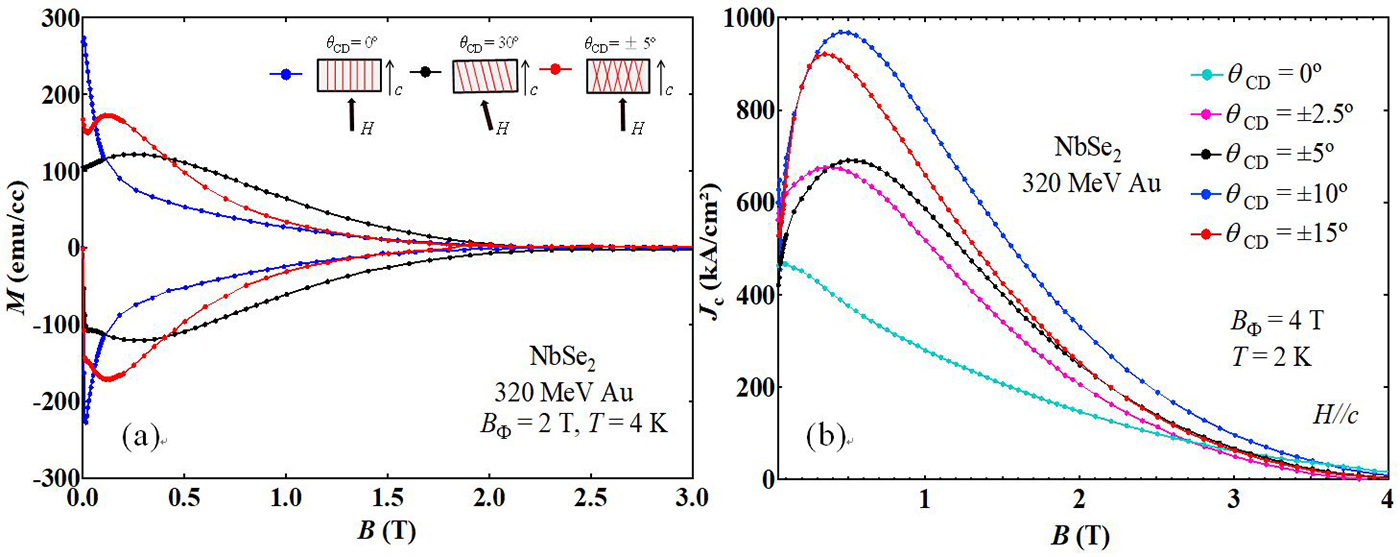PC7-3
Peak Effects in 2H-NbSe2 Single Crystals Introduced with Artificial Defects by Particle Irradiations
*Wenjie LI1, Sunseng Pyon1, Ataru Ichinose2, Satoru Okayasu3, Tsuyoshi Tamegai1
- Department of Applied Physics, The University of Tokyo, Japan1
- Central Research Institute of Electric Power Industry, Grid Innovation Research Laboratory, Japan2
- Advanced Science Research Center, Japan Atomic Energy Agency, Japan3
One of the famous pinning phenomena in type-II superconductors is the synchronization peak effect which occurs near Hc2. This phenomenon has a renewed interpretation based on the order-disorder transition of vortices [1]. By introducing artificial defects through chemical doping, the peak effect is found to be more pronounced. Using the 3 MeV proton irradiation which is known as one of effective physical ways to introduce point defects in superconductors, the enhancement of the peak effect is also observed. Other than the peak effect related to order-disorder transition, another peak effect which is induced by columnar defects (CDs) is often reported. For example, in YBa2Cu3O7 introduced with tilted CDs, an anomalous peak at ~1/3BΦ (BΦ: dose equivalent matching field) was observed [2]. A similar peak effect has also been observed in iron-based superconductors with which CDs are introduced from two symmetric directions with respect to the c-axis at angles of ~ ±15º [3]. Recently, a similar peak effect at ~1/5BΦ has also been reported in NbSe2, which is known as one of the representative conventional layered superconductors, with tilted CDs [4]. To understand how the configuration of CDs affects thepeak effect in NbSe2, three kinds of CDs are introduced in NbSe2 single crystals by particle irradiations. Prominent peak effects in magnetization are observed in samples with tilted CDs and splayed CDs as shown in Fig. 1(a). However, in the simplest case of CDs parallel to the c-axis, there is no peak effect as shown in Fig. 1(a). How a small tilt angle of CDs affects the appearance of the peak effect is a serious challenge. Similar measurements for samples with different θCD (angle between c-axis and CDs) demonstrate that Jc and the peak field show systematic but nontrivial θCD dependence as shown in Fig. 1(b). We try to answer these behaviors of the peak effect through systematic measurements on samples with different θCD, θH (angle between external field and c-axis), and BΦ. Possible origins for these peak effects are discussed.
[1] Y. Paltiel et al., Phys. Rev. Lett. 85, 3712 (2000).
[2] L. Civale et al., Phys. Rev. Lett. 67, 648 (1991).
[3] A. Park et al., Phys. Rev. B 97, 064516 (2018).
[4] S. Eley et al., Sci. Rep. 8, 13162 (2018).
Fig. 1. (a) Magnetic hysteresis loops for 2H-NbSe2 single crystals irradiated by 320 MeV Au with parallel, tilted, and splayed columnar defects (total BΦ = 2 T). (b) Critical current density for 2H-NbSe2 single crystals introduced with splayed columnar defects with various θCD (total BΦ = 4 T).
Keywords: NbSe2, artificial defects, peak effect
